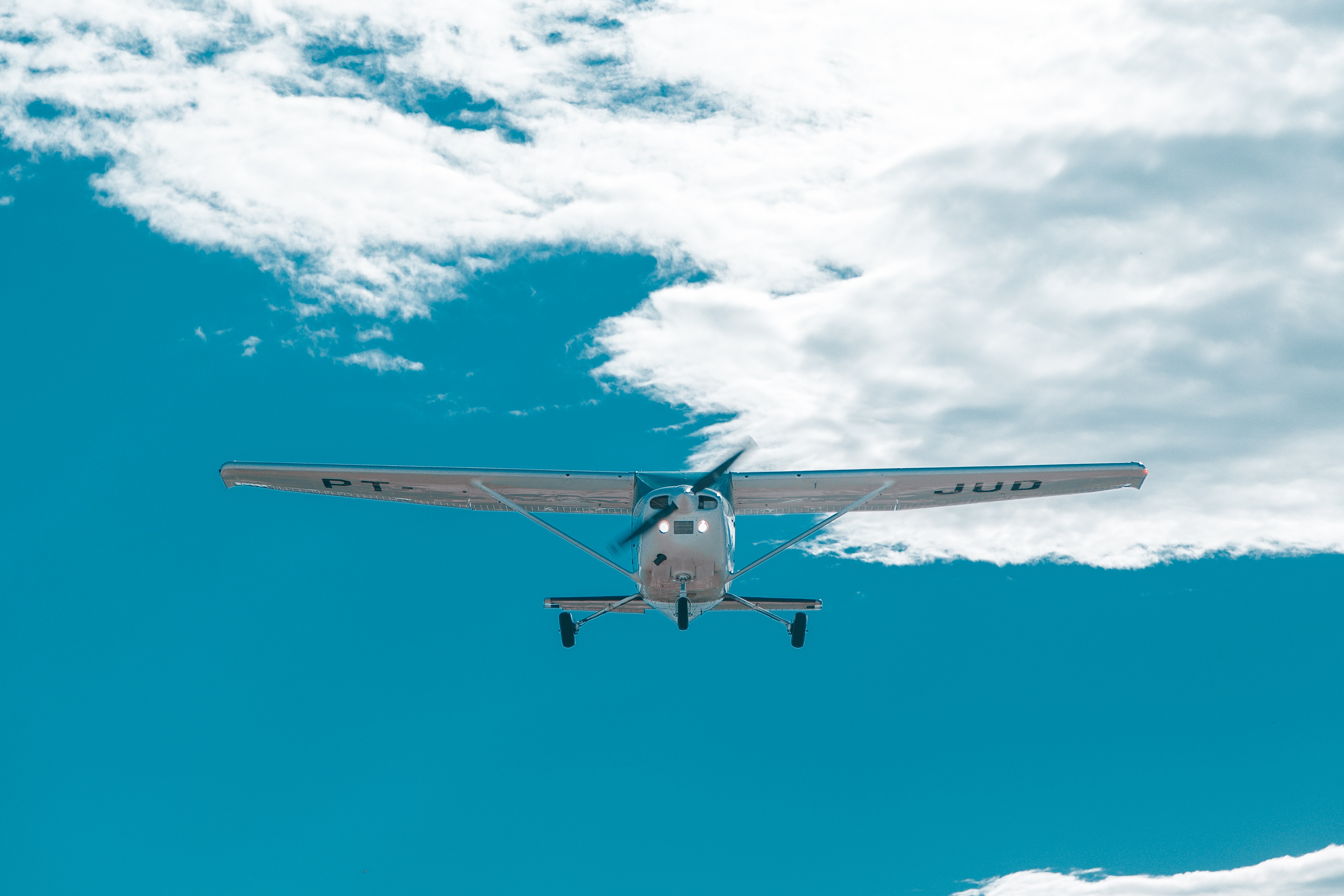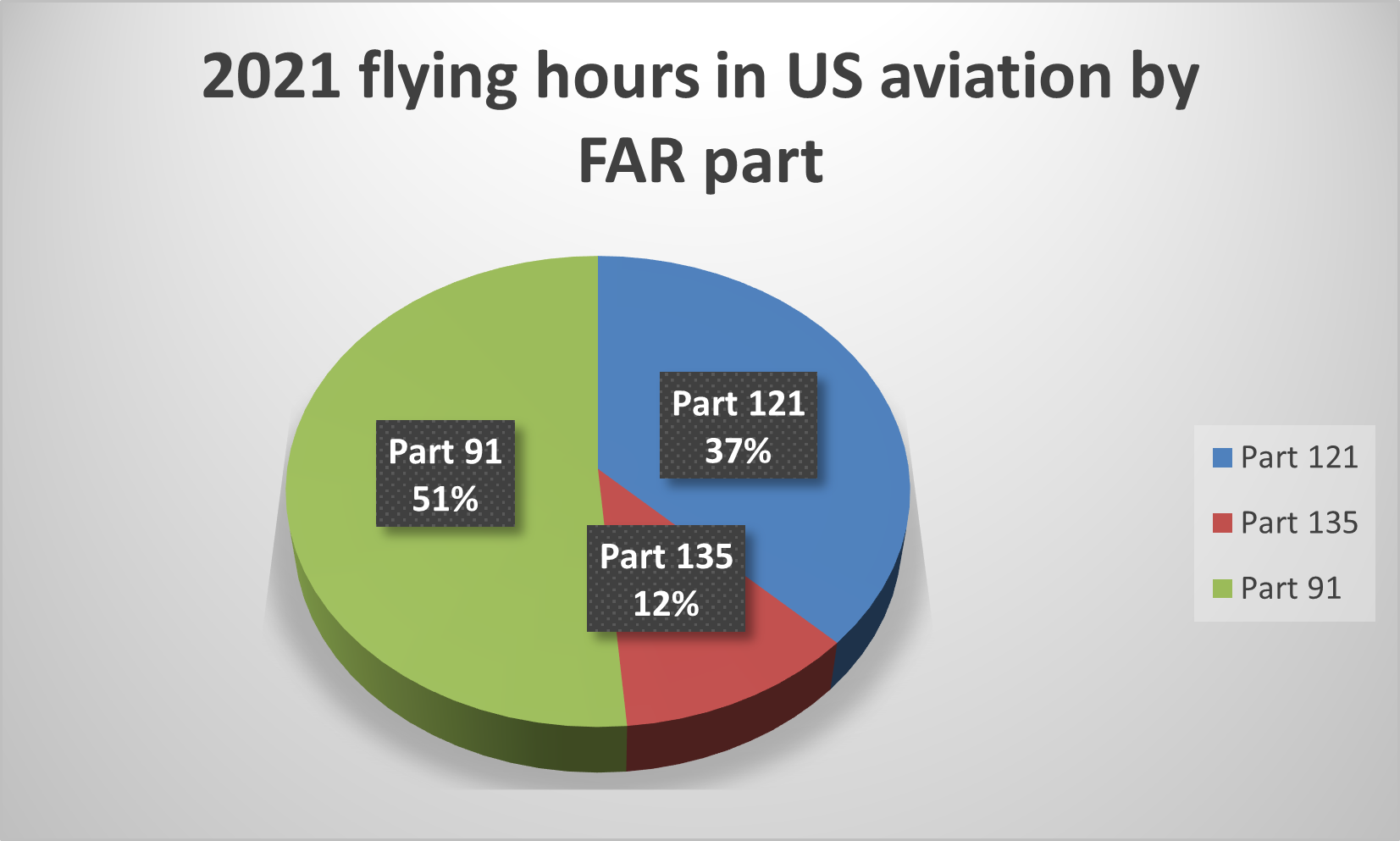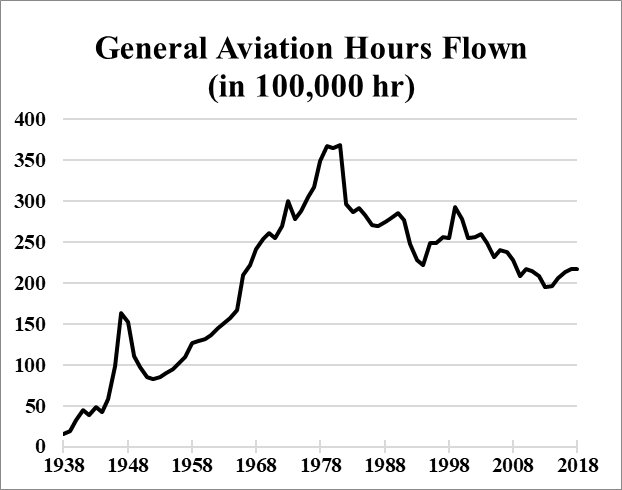
US flying categories and utilization
I think we should start our technical discussions on aviation data and statistics by understanding just how prevalent flying is in the US and how aviation is categorized. Once again, I will be restricting our discussions to civilian only aviation in the US for reasons outlined here. But even in US civilian aviation, there are many different categorizations for aviation operations and vehicle types that should be understood before other data analysis takes place. This is because there are different regulations, processes, and ways each category are utilized and these have a big effect on any relevant data.
I am sure most of us have an idea of the extent of commercial scheduled airline “air carrier” operations. In this aviation “segment,” companies such as American Airlines, Delta, United, and Southwest (or British Airways, Swiss Air, or Lufthansa in Europe) fly scheduled routes between relatively large cities on airplanes with over 30 seat aircraft. Aircraft operations for this category are regulated in the US under the Federal Aviation Regulations “FAR“ part 121 and the airplanes that fly in this category are regulated under FAR part 25. You don’t have to read the FARs or to understand many of the differences (unless you work in the industry), but you should try to know that part 121 is air carrier operation and part 25 describes the “airworthiness” regulations for “transport category” airplanes. You need to understand the difference between the two because part 25 airplanes can also fly in other operational categories and do so frequently even though they are generally associated with part 121 operations. There are two other operational categories for airplanes that are of a large significance, these are FAR part 135 “charter” operations and the catch all for other operations is the part 91 “general aviation” or GA operations. The other category of airplane that is significant is the “normal” category airplane regulated under FAR part 23. Normal category airplanes are generally thought of to fly in part 91 general aviation, but also fly in part 135 “charter operations. I know this is all slightly legal-ese, but its the way that things are broken down in the industry and also the way they are generally talked about.

Ok, now to some data! Every year, the National Transportation Safety Board releases their Aviation Accident Statistics, that amongst other data, includes a brief summary of flight activity for the previous year. As of now, the 2022 data isn’t out yet, but the 2021 data has been published. It shows that in 2021, US air carriers flying under part 121 flew 7,829,792 flights and logged a total of 15,931,746 flight hours. This was significantly below the 20 year average of 18 million flight hours but up more than 33% from the nearly 12 million flight hours flown in 2020. It goes without saying that the numbers for these years were heavily impacted by the COVID-19 pandemic and are much lower than the 19.7 million hours flown in 2019. Companies also flew 4,876,399 hours for commercial charter operations under part 135. In general aviation (part 91), pilots flew 21,965,783 hours. So, if you compare US flying by hours, air carrier operation was 37% of all US flying, charter operations 12%, and general aviation 51%.
I think the fact that there are more general aviation hours than part 121 surprises some people, especially people that are not from the US. The US has a relatively large general aviation community and there are a couple high level reasons why. First, the US is a relatively large landmass and, for most of the country, doesn’t have really great public transportation options. So, from a practical perspective flying just makes sense. This is especially true in places like Alaska, where getting around by airplane is often the only way to travel from place to place. In fact, the US has more than 4 times the number of airports than any other country in the world (13,513 US airports compared to 4,093 Brazilian airports and 1,714 Mexican airports in 3rd according to indexmundi). Most of these airports are smaller community scale general aviation airports. But, I believe the practicality of it is only one reason that Americans fly personal aircraft. Another important reason is that many Americans are just familiar with the idea of flying. Many personally know pilots and many have experience flying in other modes like the US military, which has an extraordinarily large aircraft fleet (more than 3 times larger than Russia which has the second largest military aircraft fleet).

However, even in the US, general aviation is declining in popularity. Extracting historical data from the General Aviation Manufactures Association (GAMA) and the Federal Aviation Administration (FAA) shows that at it’s peak in 1978 Americans flew over 36 million hours in general aviation. This number has been decreasing consistently from then to the around 21 million hours flown in 2021. This decrease in utilization comes from a couple of changing factors from then until now. First, it is more expensive to get a pilot’s license now than it was in 1978 adjusted for inflation. In addition, the cost of an airplane is much higher as adjusted for inflation. Secondly, many more people consider flying small aircraft too dangerous, and perhaps it is (more on this later). Whatever the reason, we feel like there are technological solutions to reversing this trend.
